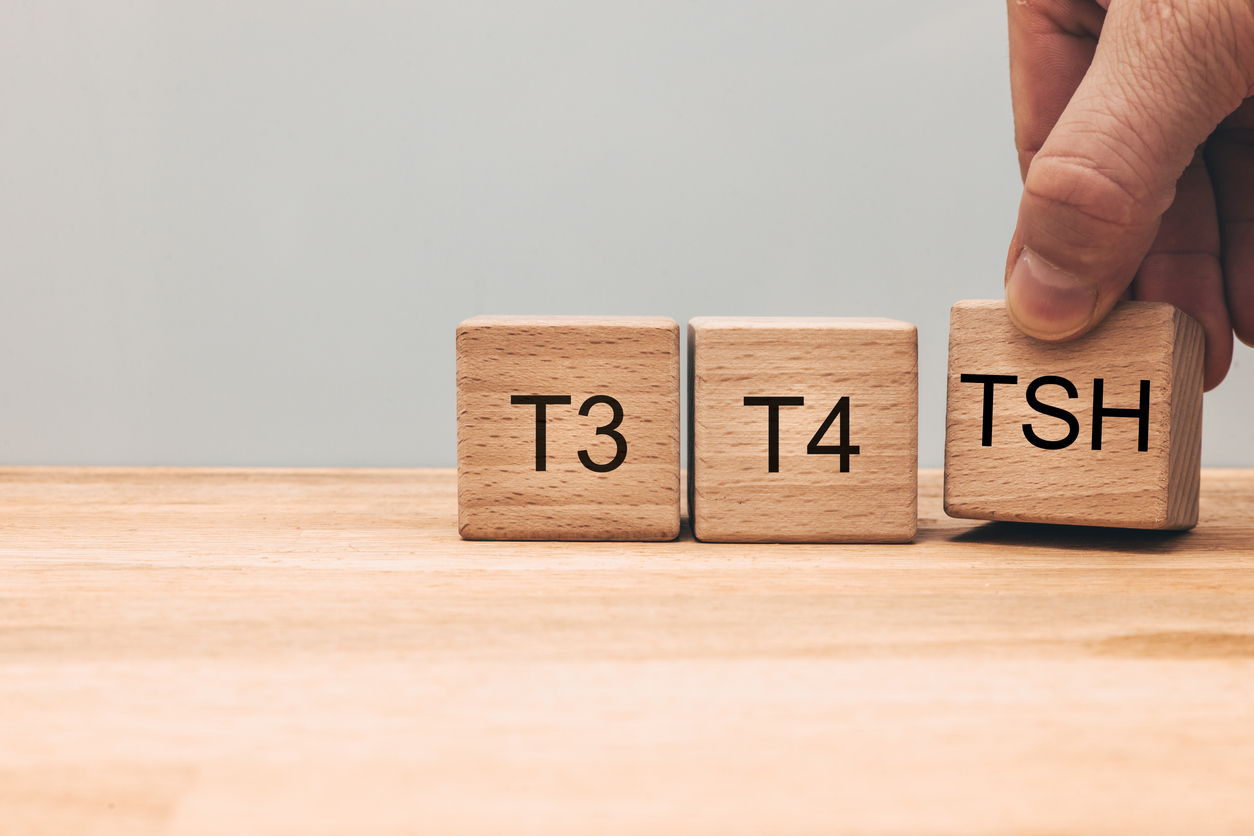Most of us (especially women) know that ladies should regularly, preferably once a month, perform breast self-examination. However, few people realize that there is at least one more organ in the human body that can be examined independently at home: the thyroid. Although touching your neck does not replace a visit to an endocrinologist, if the entire „procedure” is skillfully performed, it may protect us from the development of some diseases of this organ.
Where to look for the thyroid?
The thyroid is a gland that resembles the shape of a butterfly. It produces hormones thyroxine (T4), triiodothyronine (T3), and calcitonin, which affect the proper functioning of the entire body, including the digestive, respiratory, immune, circulatory, reproductive systems, skeleton, human growth, and water-mineral balance.
The thyroid is located in the anterior-posterior part of the neck. It can be felt on both sides of the trachea. Its palpation examination (by touch) aims to detect various abnormalities related to its structure: nodules or asymmetrical changes.
A thyroid self-examination can be conducted at home at any time. The necessary tools include a mirror and a glass of water.
- Stand or sit in front of a mirror in such a way that you can clearly see the anterior part of your neck.
- Tilt your head back and extend your neck upwards.
- In this position, take a sip of water.
- While swallowing, observe your neck in the mirror.
- The movement of the esophagus during swallowing will allow you to notice any nodules or asymmetrical changes that may have appeared on the thyroid. It is advisable to repeat the swallowing action several times to thoroughly inspect the neck.
- It is also beneficial to examine the thyroid by palpating it with your fingers. Gently feel the thyroid on your neck and check for any new lumps, tenderness, or if it feels soft or hard. However, be cautious and touch the thyroid gently, as applying too much pressure may cause inflammation of the gland.
Everyone can perform such a thyroid examination, but it is especially recommended for individuals over 40 years of age. This is one of the preventive measures against, among other things, thyroid cancer. Initially, this neoplasm is not associated with any symptoms. Over time, patients may notice enlarged lymph nodes on their neck and a painless, hard nodule on the thyroid.
It is essential to note that detecting a nodule on the neck does not necessarily mean it is cancerous. Thyroid nodules are usually benign; however, it is crucial to have them regularly monitored by a physician.
Not just a home examination… Thyroid self-examination is an additional method of monitoring this organ. Apart from that, it is advisable to have an ultrasound examination every two years (unless there are any concerning developments) and to determine the levels of hormones produced by the thyroid through blood tests: T3 and T4, as well as TSH (thyrotropin produced by the pituitary gland – regulating thyroid function).
What signs within the thyroid area should prompt an urgent medical visit? Primarily, neck swelling (an increase in circumference), tenderness, nodules, as well as swallowing difficulties, hoarseness, a sensation of pressure in the esophagus, and difficulty breathing.
Keep in mind that thyroid diseases often present non-specific symptoms. Hypothyroidism may manifest as chronic fatigue, drowsiness, anxiety disorders, weight gain, indigestion, constipation, cold intolerance, memory disturbances, concentration difficulties, and hoarseness. On the other hand, hyperthyroidism often presents with goiter, or thyroid enlargement, eye protrusion, shortness of breath, sweating, weight loss, increased appetite, restlessness, palpitations, and insomnia.
Observing your body can help identify concerning signals sent by the organism. It is crucial to pay attention to unusual symptoms. If you notice any, it is best to consult a physician as soon as possible. Early detection of a disease allows for diagnosis, treatment, and resolution of persistent symptoms.




